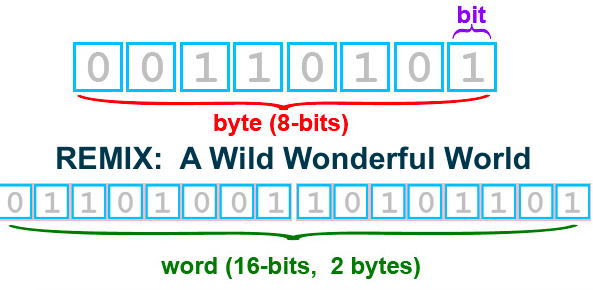
We live in the wild wonderful world of remix and always have. But it’s only recently with the blossoming of the digital age providing infinite opportunity to alter things that this truth is beginning to emerge in world consciousness.
Remix is a term that’s been around for years, but its usage seems to be on the rise. I see it cropping up all over the place in my reading—particularly in literature from makerspace and digital circles. Remix is a piece of media, which has been altered from its original state by adding, removing, and/or changing pieces of the item. A song, piece of artwork, book, video, or photograph can all be remixed with something else.
Looking at things from a philosophical as well as a literal perspective, everything is a remix—most especially human beings since we are a remix of our parents’ genetic codes. Awesome to ponder isn’t it? On the one hand we are not original because we were made from old stuff of our parents that was already around—and yet we are unique variations occurring only once.
That old saying “ . . . there’s nothing new under the sun” really isn’t true because anything that has been altered, however slightly, or made again (even on an assembly line) is not exactly like any other thing, even though it may appear to be so. Indeed, it is another entirely new thing under the sun. While we are remixes of our parents, and we may resemble them, we are nonetheless not the same.
Everything Is Both New and Old Under the Sun
Despite the insane drive to apply the cookie cutter of standardization to carve out a new world order spawned by the Industrial Revolution begun in England in the 18th century and carried forth in full force in the USA throughout our 20th century mass production factories—the sameness and any comfort or security we may have derived from these activities of mass production have been largely illusionary.
Perhaps at some level we knew what we were doing when we shipped our factories out of the USA. Perhaps our leaders thought we had to make way for the digital age (even though digital doesn’t require a lot of space). Still regardless the wisdom of that decision, few would argue that it may have been a tad hasty to sweep the remains of the Industrial age out the door before we had at least thoroughly remixed its salvageable elements with the new ones from the digital age.
I guess that will always be a point of debate but there is little debate regarding the downward spiraling economic hardships such decisions have caused the majority of the American people for the past 25 to 30 years. The devastated urbanscape of many cities today look like a set from a Mad Max movie that took place in a world left behind after an apocalypse.
Old with the New is a Critical Requirement for Makerspaces
Makerspaces, if they are designed well, include opportunities for makers to learn how to use new technology as well as how to use old tools—such as blacksmithing, welding, wood carving, pottery wheels, needle and thread, pencils, paper, etc. Mixing the old with the new often creates something new that would never have been possible if the maker did not have a broad exposure to various tools and technology.
The nano-material, Graphene, was made possible by Scotch Tape and a lead pencil
Scientists from 3M created Scotch Tape in 1930 by combining DuPont’s impermeable cellophane with another recent discovery, masking tape. Seventy years later in 2004 Scotch Tape solved a problem in the lab that led to the creation of Graphene a nano-material (a category of materials that encompasses products up to 100 nanometers thick—one inch equals about 25 million nanometers). Graphene is stronger than steel and more flexible than a rubber band. It conducts heat and electricity. It is transparent, almost weightless, and impermeable to bacteria and gases. Truly, Graphene is a wonder material of the 21st century that will no doubt result in the creation of many new fabulous products.
The discovery of Graphene was made possible with Scotch tape and an old fashioned lead pencil. In 2004, two physicists at the University of Manchester laboratory (Andre Geim and Kostya Novoselov) discovered they could peel off thinner flakes of graphite from the lead pencil by peeling off a layer with Scotch Tape. They were able to peel the graphite back to a layer composed of a single atom.
Science and Art Work Together in the Makerspace and the World
In addition to mixing old with new, Makerspaces remix science and art. For so long we kept the disciplines of science and art separate. A Makerspace environment makes sure to include both disciplines in its environment. Today we make music with DNA code. There are even businesses now cropping up all over the internet that will isolate a person’s genetic .signature and translate its sequence into musical pitch and rhythm. Your DNA song. [Source: https://www.yourdnasong.com - accessed January 25, 2017]
The Organic and the Inorganic Can be Remixed
Scientists have been storing digital data in DNA since 2012 when Harvard geneticists encoded a 52,000 word book into snippets of DNA. DNA has many advantages for storing digital data. For one thing, it can last hundreds of thousands of years. Storage is no problem. A single gram of DNA is capable of storing 215 million gigabytes of digital information. [Source: http://www.sciencemag.org/news/2017/03/dna-could-store-all-worlds-data-one-room accessed January 26, 2018]